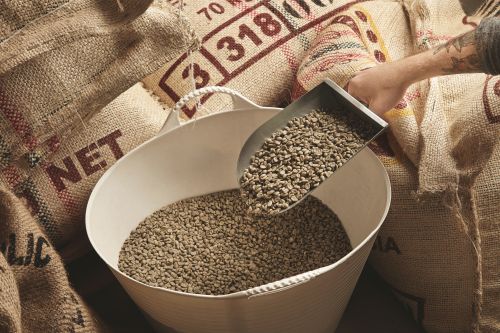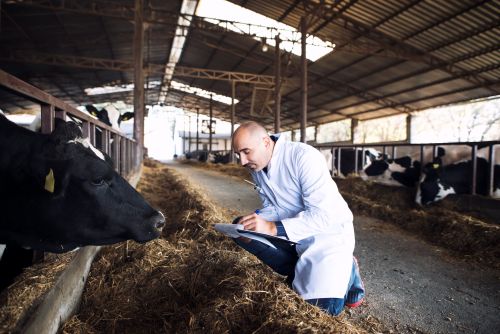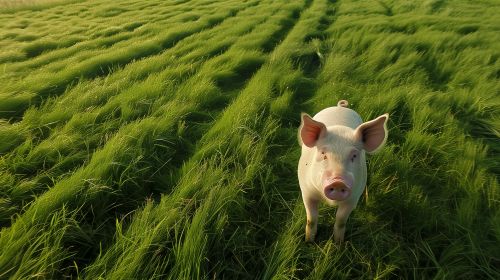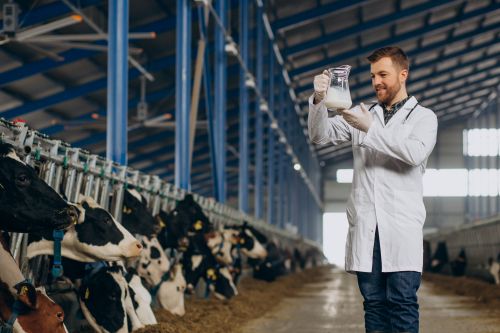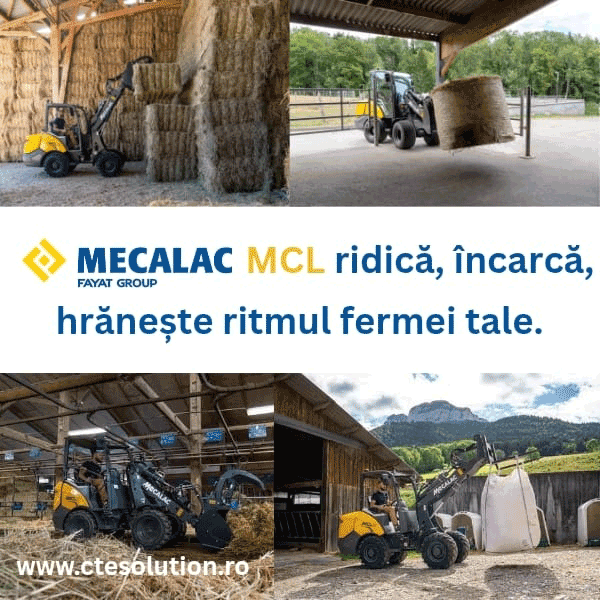
The Future of Agriculture: Precision, Technology, and a Global Race to Adapt
According to a report by McKinsey & Company, if global development continues at the current pace, crop demand is expected to at least double by 2050.
As a result, food producers are under growing pressure to adopt precision agriculture techniques.
In this context, with ever-changing conditions, Agri High-Tech technologies are becoming essential. But how quickly can they be implemented, and what challenges must their promoters overcome? Once again, McKinsey & Co. provides some answers.
A Digital Future
Some countries, such as the United States and the Netherlands, were among the first to begin using precision farming techniques—as early as 1998.
Since then, technologies like soil and crop monitoring, variable-rate input applications, and tractor guidance systems have become increasingly common. In fact, in the U.S., evidence shows that these tools were adopted on 45% to 55% of farmland between 2010 and 2013 alone.
Grand View Research Inc. forecasts that the global precision agriculture sector will reach $10.23 billion by the end of 2025, with a compound annual growth rate of 14.2% over the same period.
Yet this significant opportunity comes with its own set of challenges. Let’s explore the key barriers to implementing Agri High-Tech tools and techniques.
Greater Yields, Fewer Resources
Agriculture has a history spanning more than 23,000 years. It is undoubtedly one of humanity’s oldest and most vital trades—and also, perhaps, one of the most conservative. This conservatism is present even in technologically advanced countries.
When faced with the challenge of feeding a growing global population, too many farmers and agricultural businesses around the world still cling to decades-old practices. Many remain ideologically unprepared to embrace modern digital technology. It may seem rational to continue doing what your ancestors did successfully—but this mindset is outdated and counterproductive.
Meanwhile, the clock is ticking. As mentioned, crop demand is set to rise sharply, while the availability of clean soil and water will decline.
Scientists warn that without technological progress, feeding humanity will soon become a struggle. Precision agriculture offers a solution—enabling farmers to grow higher-quality crops using fewer resources.
This is why it's crucial to let go of outdated workflows and take advantage of the substantial benefits that modern tools and technologies can provide.
For example, National Geographic found that U.S. farmers implementing precision farming practices increased their gross annual returns. Small farms (800 acres) earned an extra $11,000; medium-sized farms (1,600 acres), $26,000; and large farms (2,400 acres), $39,000. The numbers speak for themselves.
Tradition Is No Longer an Excuse
Many farms have operated at the same technological level for years. Some farmers haven’t made any significant upgrades simply because they didn’t see the point. Others lacked the funds.
As a result, many farms are technically outdated. But for those who want to stay in business, these excuses won’t hold up much longer.
Even if a farm is not yet ready for full-scale modernization, those aiming for future profitability must find a way to begin adopting technology. Affordable tools, such as digital platforms that analyze satellite data, can help ease the transition without requiring large investments.
For instance, EOS Crop Monitoring combines historical weather reports and forecasts with current and past field and crop data. The platform processes satellite data to deliver unlimited color imagery and NDVI maps. These tools help farmers better understand how to grow higher-quality crops more efficiently, reduce research costs, and receive alerts about weather risks, among other advantages.
Land Limitations and Costs
Access to land remains a major challenge. Between 2004 and 2018, global farmland inflation increased by nearly 150%.
Meanwhile, the number of young people trained in agriculture has declined. Even those with the necessary knowledge often can’t afford to enter the sector or secure loans. Many identify land access as the main barrier keeping them out of agriculture altogether.
Moreover, farmers who don’t own the land they work are far less likely to invest in upgrading their operations.
Establishing a high-tech farm, purchasing specialized equipment, and implementing precision agriculture techniques are undeniably expensive.
Nevertheless, these changes are necessary. When it comes to Agri High-Tech, several recommendations are worth considering.
First, consult an expert before making decisions or purchases. Second, view high-tech expenses as long-term investments that can generate returns far beyond the initial costs. Lastly, be prepared for the transformations that come with precision agriculture—learning to manage additional data, training staff, and adapting operational models.
Fortunately, momentum is growing. In highly developed countries, technological clusters are emerging, and more investors are showing interest in farms of all sizes that adopt precision methods.
A Major Obstacle: Lack of Education and Skills
According to the same McKinsey report, over 40% of the global workforce is employed in the agri-food sector—including two-thirds of the population in developing countries.
Unfortunately, the educational backgrounds of many in this field are inadequate.
For example, in Brazil—one of the world's largest agricultural producers—9% of rural landowners have not completed primary school, and 27% are illiterate. An additional 53% finished primary school but didn’t pursue further education.
This significantly affects how farms are managed, the quality of decision-making, and the ability to adopt new technologies.
In contrast, the situation in the EU is more advanced. Around 30% of European farmers hold a master’s degree in agriculture or livestock science, while about half have completed vocational high school and a relevant university degree.
However, many must choose between further education and working on a farm, due to the cost of schooling and running a business. Still, some manage to participate in postgraduate programs.
Age is another critical factor. In 2013, 31% of EU farm managers were over 65 years old, while only 6% were under 35. In the U.S., the average farmer is 58, and over 33% are 65 or older.
Connectivity Challenges
High-speed internet access is crucial for implementing high-tech tools and systems. While most farmers in the U.S., Canada, and many EU countries enjoy reliable internet, gaps remain.
For instance, in 2017, only 59% of rural households in the UK had access to superfast broadband, meaning farmers in certain areas still struggle to adopt new technologies. This is a global issue that requires a coordinated solution.
In any case, focusing on the future must remain a priority. Just because something works today doesn't mean it will be effective tomorrow—especially in agriculture. Experts worldwide agree that Agri High-Tech is the future. Precision farming is expected to become agriculture’s leading trend by 2030.
Results are already visible across the globe. According to the same study, precision techniques applied on hundreds of hectares lead to significant profit increases.
Meanwhile, investors are keenly aware of the sector’s potential. If crop demand grows as predicted, the payoff could be enormous. That’s why many are eager to support agri-tech innovation.
For example, Dubai’s Investment Corporation invested $203 million in Agri High-Tech, while Japan’s SoftBank committed $200 million. Moreover, food and agri-business companies are already delivering higher returns than many other lucrative industries.
Yes, It’s Possible in Romania Too
If you think this future is out of reach for Romanian farmers, think again. Since 2021, access to digital high-tech precision farming tools has been facilitated in Romania.
Under the 2021–2027 Common Agricultural Policy (CAP), EU member states are encouraged to design technology-driven programs that promote precision agriculture across Europe.
To this end, the European Confederation of Agricultural Contractors (CEETTAR) and CEMA—the European Agricultural Machinery Industry Association—have joined forces to propose an innovative idea: a “smart technology voucher.”
This CAP-backed voucher would enable farmers to access advanced technologies that they might not otherwise be able to afford.
With access to specialized equipment and qualified labor from contractors, farms of all sizes can benefit from high-tech solutions—scaled according to their size. This levels the playing field, enabling smaller farms to compete with larger, more advanced operations, and boosting rural development as a result.
Furthermore, smart tools would help farmers enter markets more quickly. New invoicing and payment systems could help farmers identify the added value brought by contractors.
Farmers would be able to test these new technologies through contractors before committing to larger investments, accelerating adoption and minimizing financial risks.
A Technologically Neutral Funding System
According to CEETTAR and CEMA, the funding system should remain technology-neutral and as harmonized as possible across the EU to avoid market distortion. Unauthorized equipment modifications or retrofits that void machine approvals should be excluded.
The scope and timeline of the support must be clearly defined to ensure legal certainty for investors, contractors, and manufacturers. Additional support should be offered to farmers adopting at least four digital tools, demonstrating full integration of precision systems.
The voucher amount should depend on the total hectares serviced with precision agriculture tools through a contractor. CEETTAR and CEMA believe that indirect support for contractors via vouchers will also attract more young people to this growing business environment in rural areas.
Benefits for farmers include higher yields and lower input costs. Finally, these vouchers should be made available in all EU member states to ensure geographic equity in accessing precision agriculture technologies.
(Photo: Freepik)
